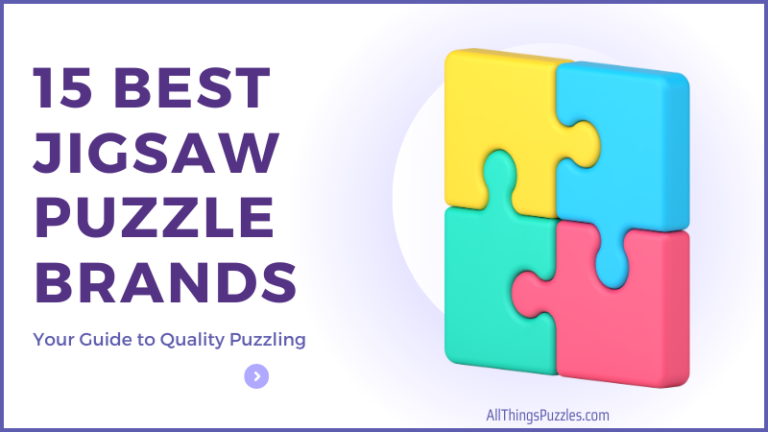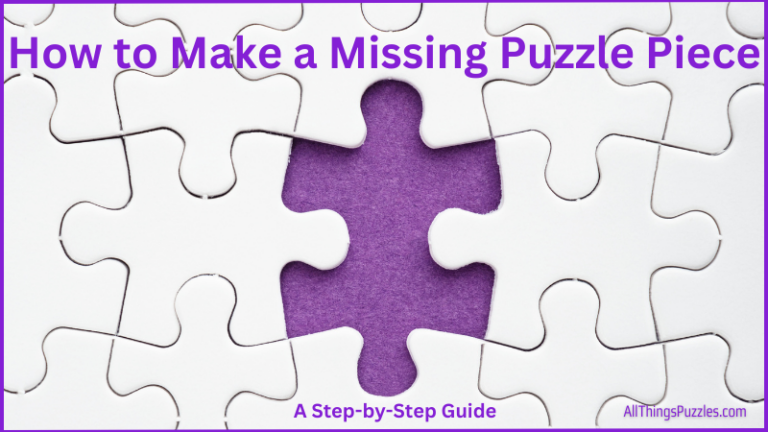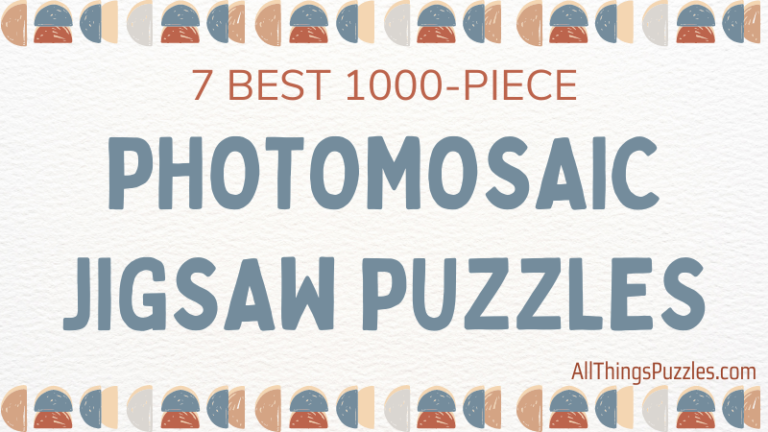If you’re a puzzle enthusiast with a growing collection, organizing and storing your jigsaw puzzles can be a challenge. With different sizes and numbers of pieces, finding effective puzzle organization ideas is key to keeping your living room, puzzle area, or game storage closet in order. It’s important to have easy ways to access your puzzles while ensuring none of those pesky missing pieces get lost. Whether you own puzzle roll-up mats, cardboard boxes, or a specialized puzzle board, there’s a great way to keep your treasure trove of puzzles in perfect order.
Key Takeaways:
- Maintaining puzzle organization involves finding storage solutions that work for various sizes and types of puzzles.
- Sorting and categorizing your puzzle collection can help prevent missing pieces and make it easier to select the puzzle you want to work on.
- Some creative organization methods can act as both functional storage and display options, enhancing the decor and showcasing completed puzzles.
Organizing your puzzle pieces and board games can be a great way to keep your living room tidy and your puzzle collection accessible. Using storage solutions like puzzle roll-up mats and puzzle boards can save space and help prevent losing pieces.
Various storage solutions like Ziploc bags for small games, rubber bands to secure card games, or even a gallon bag for floor puzzles can make all the difference in maintaining an organized and efficient game storage system.
For different size jigsaw puzzles, consider a puzzle storage box, ideally of various sizes to fit your own puzzle needs. Puzzle boxes are a great solution for ensuring pieces stay together. If you’d rather not store puzzles in their original box due to size or wear, photo boxes are a perfect size for smaller puzzles, while cardboard boxes or plastic bins can work for larger puzzles. Wooden puzzle racks can be especially handy for wooden kid puzzles, keeping all the correct pieces within reach of little hands.
For those who own a lot of puzzles, dedicating a puzzle area with a puzzle organizer or game storage closet not only makes things look orderly but also makes it easier to find what you need. Consider a multi-tiered shelf or a toy storage unit for a convenient storage solution, where every game and puzzle has its own home, and family game nights can start with ease.
Assessing Your Puzzle Collection
Before diving into organizing your puzzles, it’s essential to take stock of what you have. Assessing your puzzle collection not only helps you understand the scope of your hobby but also enables you to make informed decisions about how to best organize it.
1. Inventory Check
Begin by conducting a thorough inventory of your puzzles. This involves gathering all your puzzles from various storage spaces, whether they’re stashed in closets, under beds, or on shelves. Lay them out in a designated area, so you have a clear view of what you own.
2. Categorization
Next, categorize your puzzles based on different criteria. Common categorization methods include:
- Type of Puzzle: Sort puzzles by type, such as jigsaw puzzles, crossword puzzles, Sudoku, word searches, and logic puzzles.
- Difficulty Level: Consider sorting puzzles based on difficulty levels, ranging from beginner to expert. This helps you easily identify suitable puzzles for different skill levels.
- Puzzle Size: List your puzzles by their number of pieces and sizes. Larger puzzles may require puzzle roll-up mats or puzzle boards, while smaller ones fit nicely into photo boxes. Use a table like the one below to sort your collection.
- Theme or Subject Matter: If your puzzles feature distinct themes or subject matters, such as abstracts, landscapes, animals, art, or literature, categorize them accordingly. This makes it easier to select puzzles based on your interests or mood.
Sample Table For Size
| Puzzle Type | Size (pieces) | Dimensions | Storage Suggestion |
|---|---|---|---|
| Jigsaw | 500 | 18″x24″ | Puzzle pouches |
| Board Game | N/A | Various | Shelf |
| Wooden | 24 | Various | Wooden puzzle rack |
Sample Table for Theme of Puzzles
| Theme | Challenge Level | Puzzle Type |
|---|---|---|
| Landscapes | 100-500 Pieces | Cardboard Jigsaw |
| Abstract | 500-1000 Pieces | Wooden Puzzle |
| Favorite Games | Over 1000 Pieces | Floor Puzzle |
3. Quality Check
Inspect each puzzle for completeness and condition. Ensure that all pieces are accounted for and that there are no damaged or missing components. If you come across incomplete puzzles or ones with missing pieces, consider whether they’re salvageable or if it’s time to let them go.
4. Frequency of Use
Evaluate how often you engage with each puzzle in your collection. Some puzzles might be your favorites and get regular playtime, while others might have been neglected. Understanding which puzzles you enjoy the most can help you prioritize their accessibility during organization.
5. Storage Space Consideration
Take into account the available storage space you have for your puzzles. If your collection has outgrown its current storage solution, it might be time to explore alternative options or declutter by donating or gifting puzzles you no longer want.
By assessing your puzzle collection in this manner, you gain valuable insights into its composition, condition, and your preferences. This knowledge serves as a solid foundation for organizing your puzzles effectively, ensuring easy access and maximum enjoyment of your puzzling pursuits.
Optimal Storage Solutions for Puzzle Organization
Once you’ve assessed your puzzle collection, the next step is to consider how to store them efficiently. Optimal storage solutions not only keep your puzzles organized but also help preserve their condition and make them easily accessible for future use. Here are some effective storage options to consider:
1. Puzzle Organizers
Investing in specialized puzzle organizers can significantly streamline your storage process. These organizers come in various forms, such as puzzle racks, trays, and sorting trays, designed to accommodate different types and sizes of puzzles. Puzzle organizers typically feature compartments or slots to keep puzzle pieces organized and prevent them from getting mixed up.
2. Stackable Containers and Bins
Stackable containers and bins are versatile storage solutions that allow you to neatly stack multiple puzzles on top of each other, minimizing the amount of space they occupy. Plastic bins come in various sizes, making them suitable for a puzzle storage box that can neatly fit under your coffee table or in your living room, occupying much less space. Look for transparent containers with secure lids, so you can easily see the contents and protect your puzzles from dust, moisture, and damage. Additionally, opt for containers with adjustable dividers or compartments to customize the storage space based on puzzle size and type.
3. Storage Bags
For puzzles with larger piece counts or irregular shapes, storage bags offer a convenient and space-saving solution. Choose durable, resealable bags made from materials like plastic or canvas to protect your puzzles from external elements. Storage bags are particularly handy for storing puzzle pieces that are in progress or puzzles that you plan to assemble later.
Ziplock bags and puzzle pouches are an easy storage method for extra pieces. For small games and kids’ puzzles, mesh bags are a great solution; they’re easy to hang and allow for a clear view of the contents, perfect for a quick visual inventory.
4. Shelving Units
Shelving units provide ample storage space for displaying and organizing your puzzle collection. Consider installing adjustable shelves to accommodate puzzles of various sizes and shapes. Utilize baskets or bins on the shelves to corral smaller puzzles or puzzle accessories like timers and puzzle books. Label each shelf or basket to make it easy to locate specific puzzles.
Installing wire racks is another option. They not only provide ample space but also help in categorizing different sizes of puzzle boxes. For larger puzzles, consider a wooden puzzle rack, a perfect size that also allows young children to access their favorite puzzles without difficulty.
5. Customized Solutions
Get creative and explore customized storage solutions tailored to your specific needs and space constraints. This could involve repurposing furniture like bookcases or cabinets to store puzzles or designing DIY storage solutions using materials like plywood, foam board, or PVC pipes. Customized storage solutions offer flexibility and allow you to adapt to the unique characteristics of your puzzle collection and storage space.
6. Digital Storage
For puzzle enthusiasts who prefer digital puzzles or want to reduce physical clutter, digital storage is an excellent option. Utilize puzzle apps or software to store and organize digital puzzle collections on your computer, tablet, or smartphone. Digital storage not only saves physical space but also provides convenient access to a wide variety of puzzles anytime, anywhere.
By implementing these optimal storage solutions, you can effectively organize your puzzle collection, maximize available space, and ensure easy access to your favorite puzzles whenever the mood strikes. Experiment with different storage methods to find the ones that best suit your preferences and lifestyle.
Labeling for Quick Identification in Puzzle Organization
Labels are an easy way to swiftly identify your puzzle collection, helping to store puzzles efficiently. Label each puzzle storage box or puzzle pouch with key details like the puzzle’s title, theme, size, and number of pieces. Consider adding a puzzle photo on the outside of the container as a visual clue.
Examples of Labeling System
| Storage Type | Label Details |
|---|---|
| Puzzle Box | Title, Theme, Size, Piece Count |
| Zipper Pouch | Puzzle Photo, Piece Count |
| Roll-Up Mat | Designated Area, Theme |
Protecting Puzzles from Damage
Securing your puzzle collection from damage is vital. Puzzle roll-up mats offer an easy way to store unfinished puzzles without losing pieced, and puzzle boards provide a smooth surface for puzzle assembly, which can be slid under a sofa or bed when not in use. Keep puzzle boxes away from direct sunlight to prevent fading and store them in a designated area, such as a toy storage or closet, to maintain their condition.
- Methods to protect puzzles:
- Cardboard boxes: for completed puzzles, label them with a puzzle photo and a sticky note indicating the number of pieces.
- Large zipper pouches: you can store floor puzzles or segregate lots of pieces for family game nights without fuss.
Display and Decoration with Finished Puzzles
Once you’ve completed a jigsaw puzzle, it can become a stunning piece of art in your living room or a feature in your puzzle area. There are elegant ways to both tidy up and display your puzzles as decor, turning them into conversation pieces and saving valuable space.
Framing and Mounting Techniques
Framing: A finished puzzle can be easily framed and mounted on the wall as artwork. Choose a frame that fits the size of your puzzle, whether it’s a standard or an irregular shape. Use puzzle glue to hold the pieces together, giving you a smooth surface for the frame. This storage solution allows you to display your hard work and acts as a space saver by moving your puzzle collection to your living room walls.
Mounting: If you’d rather not frame your puzzles, consider mounting them on a backing board. For wooden puzzles or larger puzzles, a sturdy backing board makes an ideal solution. Secure the puzzle to the board using adhesive, and hang it directly on the wall. This option gives a more modern look and is an easy way to save space.
Frequently Asked Questions
When organizing your puzzle collection, it’s essential to consider puzzle storage solutions that cater to different sizes and the number of pieces, along with ease of access and preservation. These FAQs answer questions that have often been asked.
What are effective storage solutions for puzzles in small spaces?
If you’re low on storage space, consider sliding flat, completed puzzles beneath a bed or sofa. For puzzles in progress, puzzle roll-up mats are a great solution, allowing you to easily stow away your puzzle without losing your hard work. Vertical storage, like hanging wall files, can also store puzzles without taking up much space.
What are some child-friendly puzzle organization techniques?
For young children, wooden puzzle racks are a convenient storage solution that allows little hands to easily choose their favorite puzzle. Store each puzzle in a pouch with a puzzle photo and a sticky note indicating the correct pieces count, and keep them within reach in a toy storage unit or on lower shelves.
How do you preserve and store completed puzzles?
To preserve a completed puzzle, you can glue it to a backing board and frame it, or secure it with a large zipper pouch for storage. For those that you want to re-do, store them in their original box secured with a rubber band. Puzzle pouches are another great way to keep all pieces together and can be neatly placed on a shelf or in a storage container.
Conclusion
Organizing your puzzle pieces and is a great solution to keeping your puzzles sorted and easy to access. With the easy ways provided, your living room or puzzle area will sport a smooth surface without a pile of puzzles looming. Take a look at the options, and find a storage solution fitting both your space and the number of pieces in your collection. Enjoy your newly organized space and the hard work you’ve put into sorting your puzzles and games!
Do you have any puzzle organization tips? Please comment below.






